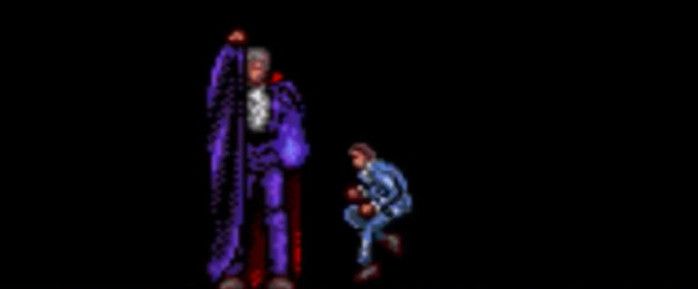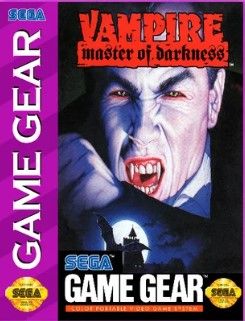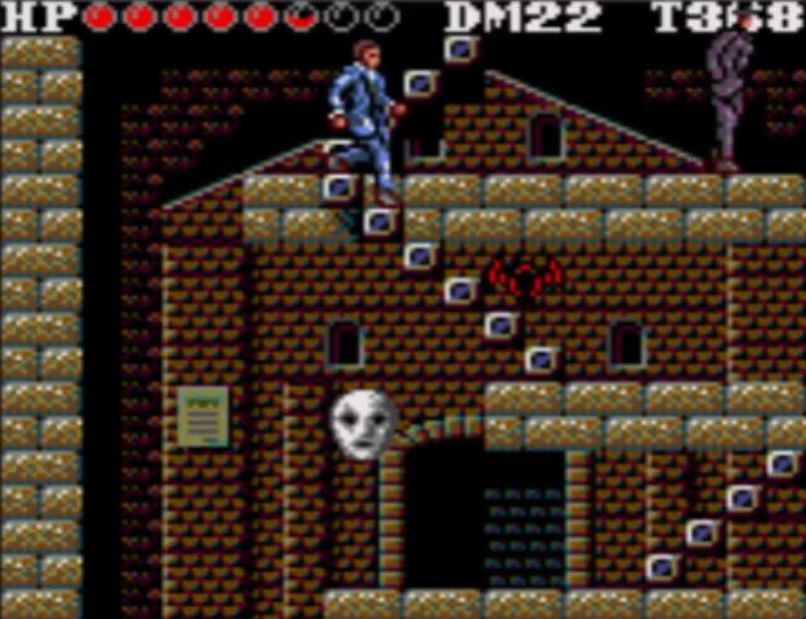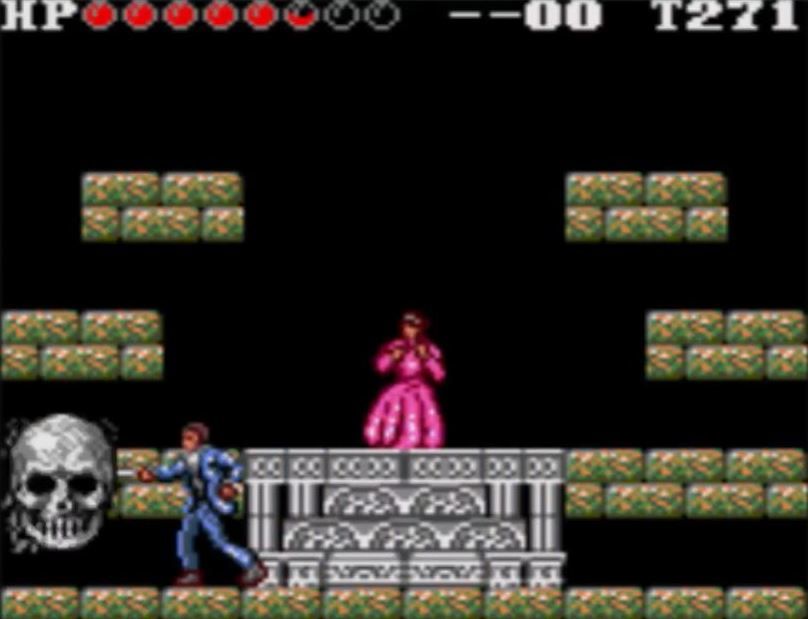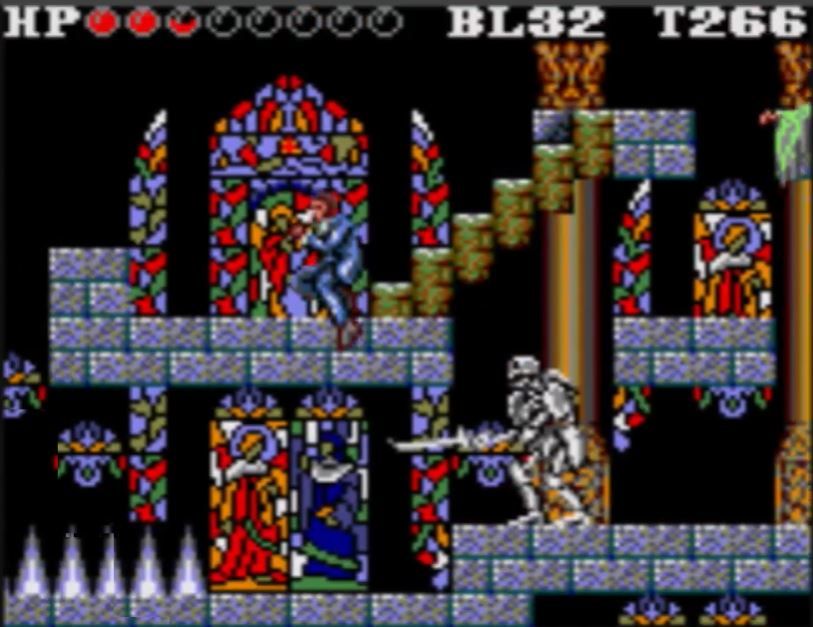Handheld gaming is more than a compromise of power and portability. Whether it’s the ability to play anywhere, multitask or hold an entire console in your hands, it’s a special experience consoles have never replicated. In a world where high resolutions and teraflops reign supreme, we take a look at a portable relic every month and reflect on what makes it memorable. Be warned, spoilers may occasionally populate these articles.
Since time immemorial, killing Dracula has been a staple of video game objectives. Dracula has appeared as an antagonist in numerous games, though the most popular vampire hunting series is Castlevania. Unfortunately for Sega loyalists this series wasn't available on a Sega platform until the twilight of the 16-bit era. Prior to this a game that bore many similarities to the games starring the Belmont clan was released for Game Gear. Master of Darkness, renamed Vampire: Master of Darkness for the North American Game Gear release, puts players in the shoes of a vampire hunter in an action platformer that scratches the Castlevania itch.
Set in England in the late 19th century the players take control of Dr. Ferdinand Social, a psychologist who believes Count Dracula is behind the murders that are being credited to Jack the Ripper. Technically both are involved, but the Social psychologist is primarily focused on hunting down the Count. He takes it upon himself to bring an end to the terror that leaves a fresh murder victim every full moon and ventures out after consulting with his Ouija Board. Normally a psychologist who relies on a Ouija Board would be discredited, but at least given the time period his board probably isn't branded with a Parker Brothers logo, which helps make it at least look more mystical.
As hinted at earlier, Master of Darkness could be referred to as Great Value Brand Castlevania and few would dispute that. Just in the opening level there are hovering masks reminiscent of Carmilla from Simon's Quest. The bats and what I presume are wolves behave similarly to their Castlevania counterparts and even have the similar stylistic designs. The level designs and environmental assets don't put in much effort to hide their influence, and curiosity was rewarded when new weapons were found by smashing some wall bricks, though at least those are probably more hygienic than meat that's been walled up for who knows how long.
Dismissing Master of Darkness as a Castlevania knock off seems like a reasonable reaction, but not necessarily the best one. For starters this predates any official Castlevania title coming to a Sega platform. Secondly, it's actually a decent game. The line between ripoff and homage can sometimes blur and Master of Darkness appears to be both at different points in the game. The Castlevania games released up to this point pitted the player against legions of the undead minions and classic horror movie and mythological monsters working under Dracula while Master of Darkness adds more of a human element to the enemies. In this instance, the infamous killer Jack the Ripper is murdering people to provide blood and bodies to Count Massen who intends to resurrect Dracula. The similarities are still bountiful and comparisons are inevitable, but Master of Darkness puts forth some effort to not be a complete copy, even if the final confrontation with the Count entails raising his cape to throw fireballs and teleportation.
At this point in the article drawing yet another comparison to that other series is beating a dead horse, but that doesn't mean it still wouldn't be a decent approximation for what can be expected in regards to gameplay. It's a 2D action game where platforming can become complicated due to pesky enemies trying to knock Social into the bottomless pit whenever he's trying to get around town.
Social has a primary melee weapons and a secondary ranged weapon with limited ammo. Picking up a new weapon of either type replaces whatever is currently equipped, and it can be a disheartening moment when Social goes from an ax-wielding vampire hunter to being stuck holding a dagger. The melee weapons consist of a cane, dagger, ax and rapier and vary in how useful they are. Ranged weapons are pistols, bombs and boomerangs.
In order to stop Dracula's resurrection from cursing Europe Social needs to fight his way through five challenging stages, each divided into three different sections. The stages are varied in their appearance, which include the Thames River, a House of Wax, a Cemetery, a laboratory in Count Massen's castle and the dungeon in Dracula's castle. The bosses include Jack the Ripper, a giant skull, Count Massen, a sorcerer and Dracula himself. The enemies Social needs to defeat to get through each level include a mix between animals, humans and more supernatural beings. Despite the criticisms of being Immitatiavania, the game does offer a fun challenge. The gameplay mechanics are solid and the graphics are nice by Game Gear standards.
Vampire: Master of Darkness makes no attempt to hide its influences, but that doesn't mean it's not still a fun game. It's not as good as classic Castlevania titles, but for a knock off does a decent job of recreating the gothic horror atmosphere and gameplay. It's actually good enough where it would be recommended to fans of the Belmont clan, though it's easy to pick on for being so derivative. But great games influence other games, and sometimes the new games bring major innovations to the table while others simply succeed at emulating what came before. Master of Darkness fits into the latter category, but was a nice way to spend a couple hours on Halloween weekend.
Get more Pocket Power. Click here to view every Pocket Power so far and prepare for a pocket-sized stroll down memory lane.

